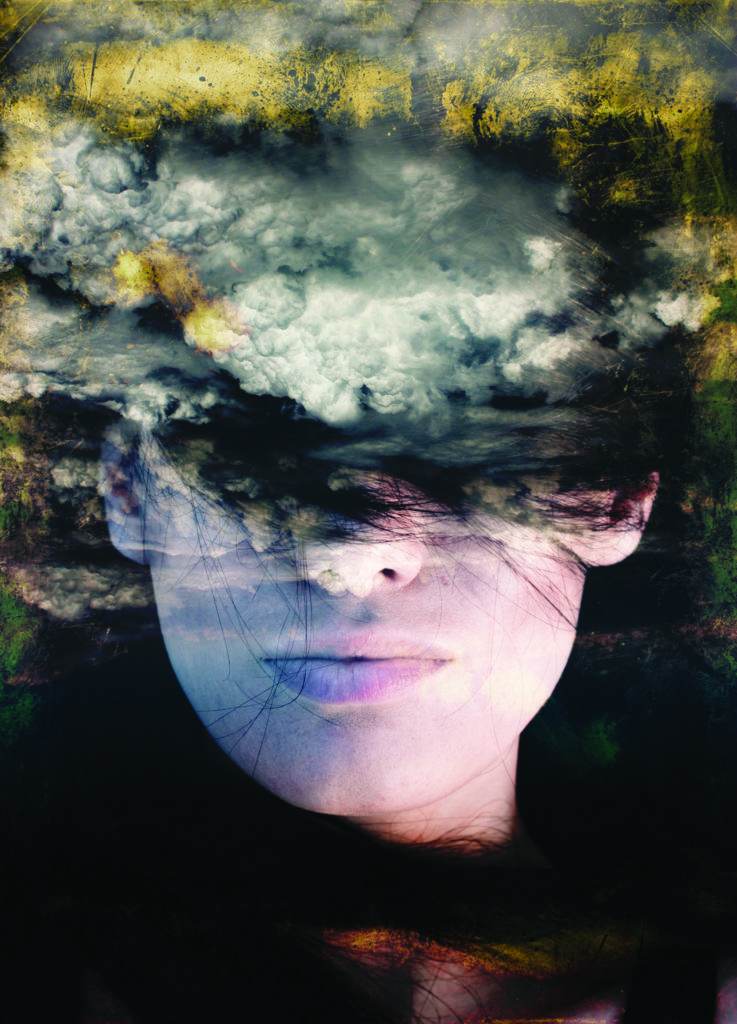BY JENNIFER DUMPERT
We’ve all been visited by the spirit of creativity. A flash of inspiration causes you to compose a new song, paint trailing vines on the kitchen furniture, or write an article that eloquently expresses some of the ideas that float through your imagination. It’s a marvelous feeling when the muses of creativity grant you their gifts. But sometimes you have to work to seek inspiration and try to harness your creative power. Difficult though that often proves, you can use liminal dreaming to woo your muse.
Liminal dreaming occurs at the boundary between sleep and waking. When we talk about dreams, we usually refer to the REM (rapid eye movement) dreams that mostly happen during the second part of the night. There are actually several different types of dreams that correspond to stages of sleep. The two stages of brainwave activity that make up liminal dreaming are called hypnagogia and hypnopompia. These are the phases of consciousness you pass through when you’re falling asleep or waking up, and they are very unusual states of mind. Artists and thinkers have long cultivated these states of mind—especially hypnagogia, which is easier to access—to jump start the creative process.
Chemist August Kekulé famously figured out the structure of the benzene ring—a problem he’d been pondering for some time—in a hypnagogic state. Nikola Tesla and Sir Isaac Newton used liminal dreaming to arrive at ideas, as did Emanuel Swedenborg and Rudolf Steiner. Readers remember the madeleine from Marcel Proust’s Remembrance of Things Past, but they forget that the first scene of the book is actually a hypnagogic reverie. To learn to take advantage of liminal dreaming to help you with creativity, all you need is a basic understanding of how it works, and then you can follow a simple practice developed by Thomas Edison and Salvador Dali.

Brainwave states, both waking and sleeping, are measured by EEG, which tests electricity in the brain and produces those sine wave–looking readouts that you can probably easily visualize. Most dream (and waking) states are marked by a consistent frequency. The more alert and focused you are, the more the peaks and valleys ripple like a child’s drawing of the ocean. In deepest sleep, the waves slow down and flatten out. Most EEG patterns are regular and predictable. But this is not true of hypnagogia and hypnopompia.
These phases of consciousness that occur at the border between waking and sleep produce chaotic, inconsistent wave patterns. Your brain shudders up through a series of micro-awakenings then ricochets down toward sleep. The EEG jumps around, flattening, rippling, creating spindles and humps. Your body twitches around just like your brainwaves do. When you’re falling asleep and your arms or legs jolt involuntarily, you know you’re in hypnagogia.
Hypnagogia is particularly easy to work with if you’re looking for creative inspiration. Derived from the Greek hypnos, or sleep, and agogos (leading), the term translates literally to “leading into sleep.” You pass through it when you’re going to sleep at night, but also during naps or even when fighting extreme fatigue. You can work with it any time throughout the day, as long as you feel sleepy enough for a nap.
Two of the most impressive creative minds in Western history used hypnagogia to woo their muses. Salvador Dali, the imaginative, eccentric, and highly influential surrealist artist who worked in a wide range of media, used it to conjure and develop images. Thomas Edison, inventor of an amazingly large number of things central to our lives—including the phonograph, the light bulb, and the motion picture—used hypnagogia to help generate ideas and engage in creative problem solving. Interestingly, independently of each other, they came up with what is more or less the same exercise to harness hypnagogia. It’s very easy to reproduce. Next time you’re looking for creative inspiration, give it a shot.
Here’s how the exercise worked: when feeling tired, each man would sit in a chair holding something in one or both hands (Edison used balls in both hands, Dali a solid brass key in one hand) over metal plates placed on the floor that would produce a clanging sound when the handheld item dropped. Edison kept a pad nearby to write out ideas. Dali kept a sketchpad. Each would sit in the chair and start to drift off, entering a liminal dream state. As they passed out of hypnagogia and started to fall into deeper sleep, they would drop the key or balls onto the metal plates, and the sound would wake them. Dali would then immediately sketch. Edison would jot down ideas.
You can easily adapt this practice to suit your own purposes. Psychologist Charles Tart came up with an alternative version of this practice in which, rather than hold something over metal plates, you simply raise one arm in the air. As you begin to drift into sleep, the arm will drop and wake you. When I follow this practice, I leave a voice-activated recorder—a phone app I purchased for less than five dollars—next to me. As soon as I re-enter consciousness, I start talking, and that sets the recorder going. You can learn more about working with dreams to enhance creativity from Deirdre Barrett’s book The Committee of Sleep: How Artists, Scientists, and Athletes Use Dreams for Creative Problem Solving, and How You Can Too.
Liminal dreaming is an extraordinary state of mind. The experience lies somewhere between thought and hallucination, as your meandering mind rehashes and remixes abstract ideas and memories while slipping in and out of the visionary animation of the dream. In this edge realm between conscious and unconscious, you’ll discover the possibility of encountering your own visionary mind. We all have deep capacity for creativity. With a little attention and practice, you can deepen that relationship.
Jennifer Dumpert is a San Francisco–based writer and lecturer, the founder of the Oneironauticum, and a proponent of liminal dreaming (LiminalDreaming.com). She tweets a dream daily as @oneirofer. UrbanDreamscape.com